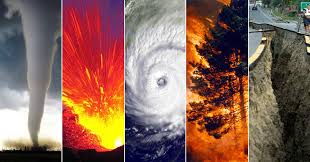The Evolution of Space Travel Part 3
March 15, 2019
For years we have been launching things into space and they have been getting better and better by the year. Launched as a part of NASA’s Mars Science Laboratory mission the Curiosity rover was launched on November 26, 2011, and successfully landed on August 6, 2012. The primary mission of Curiosity is to find out if Mars is, or was suitable for life. It took 253 day’s to get to Mars. For reference, there are 365 days in a year. According to Elon Musk, his Interplanetary Transport System (ITS) can make the journey in 80 days which is around 2.6 months. He believes that it will eventually be able to make the journey in 30 which is roughly 1 month. The distance from Earth to Mars is 54.6 million kilometers.
We have been putting things on Mars for years now but the one thing we haven’t put on Mars is a human. Successfully putting a person on Mars would be one of the greatest achievements that humans have accomplished. It is also important because we could start to move more technology and people to the planet and start trying to make Mars a second home to the human race. You may be asking your self right now, what do we know about the red planet. We know that its atmosphere is less than 1% of Earth’s. So you wouldn’t be able to breathe because it has very little oxygen. If you’re looking to get to go on a walk you better be careful because you will have to deal with dust storms. All this dust being blown into the atmosphere gets heated up from the Sun. This causes the wind to get stronger and create storms that can be thousands of kilometers in width and last for months. The temperature on Mars can vary during winter the temp can be minus 195 degrees Fahrenheit (minus 125 degrees Celsius). On a summer day, the temp can be 70 degrees F (20 degrees C) near the equator. Though we won’t be able to make Mars habitable with our current technology.
In 2020 NASA has a mission to land another rover on Mars. It is apart of NASA’s Mars Exploration Program. One of the questions that it will be looking into is the potential for life on Mars. It will be looking for habitable conditions from the past and signs of past microbial life. It is supposed to launch July/August 2020 and land February 2021 though these dates may change. The rover has a drill that can collect core samples of rocks and soil and put them aside in a cache and for a future mission and return them to Earth. It will be testing a method for producing oxygen from the atmosphere. It will be looking for ways to improve landing techniques and characterizing weather.
Some years from now we may have left the blue marble we call home and live on Mars. All of this wouldn’t be possible without the tech we use. All the rockets, spacesuits, rovers, satellites, spacecraft, and the Hubble Telescope we couldn’t see all the beauty that the universe has to offer. Space the final frontier. A place full of millions of stars and planets that we wish to go to. We have been looking to the stars for many years with wonderment. It is probably the one place that we won’t be able to fully explore, but a place that we can look up at and wonder how it works and just what can we find out there in the universe and who knows maybe there is something bigger than the universe out there like the multiverse but that is a topic for another time.










